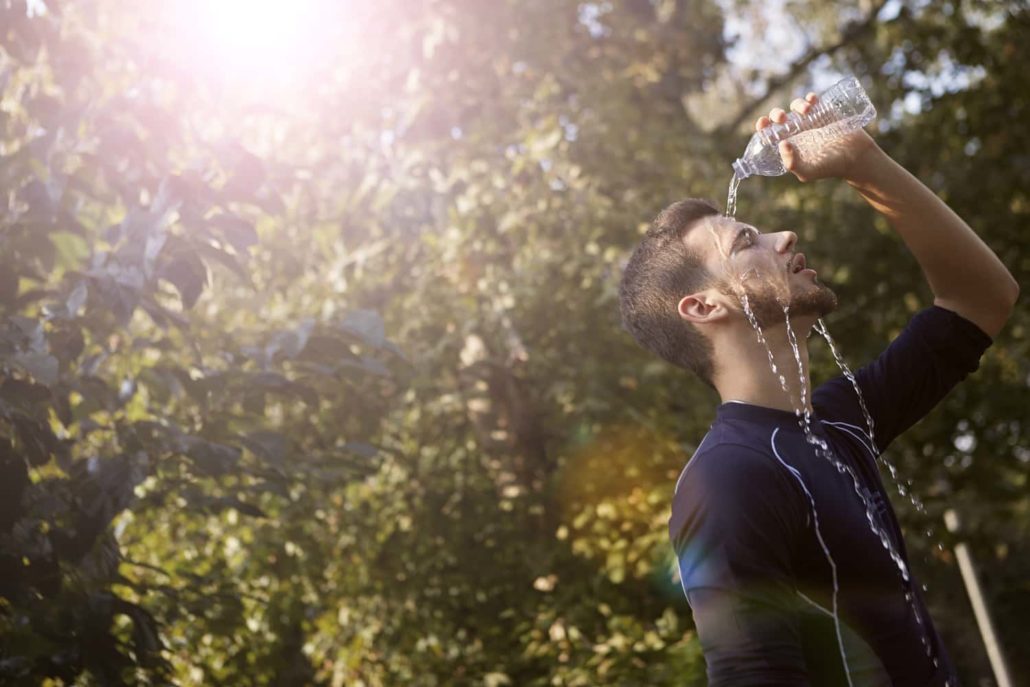Picture this: you’ve chosen your ideal hike, you know exactly how to get there and where to park, how long the hike will be, and the path you’ll be taking. You feel completely prepared … until you get on the trail, and realize you’re missing some things. Hiking preparation is not just about knowing the ins and outs of your hike. It’s also incredibly important to pack appropriately — and when in doubt, over preparation can never hurt! Here are a few things you absolutely need to take with you every time you hike, no matter how short or long the trail.
1. Water

Staying hydrated on your hikes should absolutely be your number one focus. Come equipped with more water than you think you’ll need — even if it’s a cool day, but especially if it’s a hot one. Dehydration can be deceptive — the science says that once you feel thirst, you’re already dehydrated. You wouldn’t go to the gym without a water bottle, so don’t head out to the trails without one either. Also be cautious of the weather changes that can occur during your hike. A couple and their dog in California died from dehydration less than two miles from their car on a 109 degree day — it was in the mid 70s when they started the hike.
2. Sunscreen

You know to slather on the sunscreen when it’s hot and sunny, but you also need to protect your skin even when it’s overcast. Sunburns don’t have anything to do with the temperature, but the strength of the UV rays. More than 90% of UV rays can penetrate cloud cover. And remember that certain surfaces reflect UV light more than others — it may feel counterintuitive to put on sunscreen before a snowy trek, but snow can nearly double your exposure to UV light. Don’t forget those sunglasses, either!
3. Proper shoes

Make sure you know the terrain you’ll be hiking on, so you can wear the appropriate shoes. You don’t want to slip and fall on the trail just because you wore sneakers with no grip, or get your feet drenched on a waterfall-adjacent hike because you didn’t wear waterproof shoes. Don’t be one of those people that wears dress shoes on a trail, either. Yeah, we’ve seen ’em.
4. Snacks
Trail mix got its name for a reason! Along with water, make sure you pack some food with you, especially on longer hikes. It’s nice when you want to take a break halfway through and rest/refuel, and can also be crucial if you’re burning a lot of calories and working hard. No one wants to faint on their hike, after all, and it’s no fun enjoying nature if you’re hungry. Along with trail mix, protein bars, nuts, and jerky are all great protein-filled snacks, and if you’re chugging water be sure you bring some salty snacks, too. All this can easily slip into your backpack. Speaking of which…
5. Backpack

You’re definitely going to want to bring a hiking-appropriate bag with you to fit all your essentials in. You don’t want anything that will strain your back or be too heavy, so a hiking specific bag is your best bet. Almost all of them will also have water reservoirs, to help you stay hydrated without carrying around lots of clunky water bottles. When you’re first getting started, you can use whatever you have lying around the house as long as it’s comfy — with some time and trail experience, you’ll figure out whether or not you want something with a lap belt to take weight off your shoulders or bands that hold the bag off your back if you get too sweaty.
6. Layers
Depending on where and time of day you’re hiking, the weather can change drastically in a matter of hours, even less. Bringing thin layers with you will help you stay warm when you need to, and will easily fit into your backpack when the day starts warming up. Layers are also great for protecting against sun exposure on those cooler, cloudy days — try for moisture-wicking tops for sweaty days, or light rain jackets if the forecast calls for a sprinkle.
As always, research and preparation is key for a safe and fun hike. Once you’ve gone on a few hikes, it’ll get easier to know what exactly you’ll need but if you’re just starting out, this list is a great place to start. And if you want to drill down a little deeper, be sure to check out the Ten Essentials for the standard outdoor must-haves.
